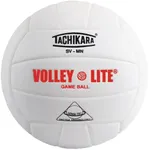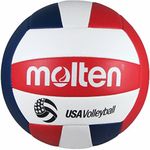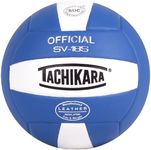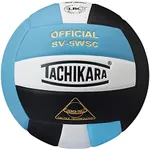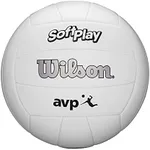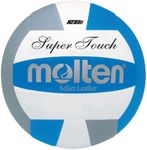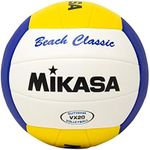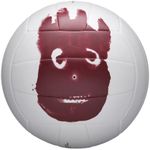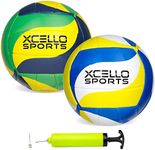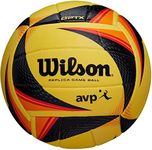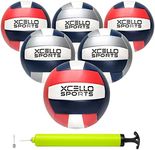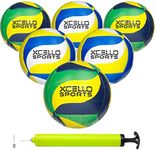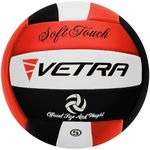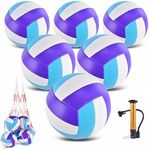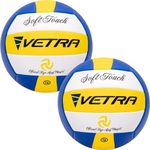Buying Guide for the Best Outdoor Volleyball Ball
Choosing the right outdoor volleyball ball can significantly enhance your playing experience. Whether you're a beginner or a seasoned player, understanding the key specifications of a volleyball ball will help you make an informed decision. The right ball should match your playing style, skill level, and the conditions in which you'll be playing. Here are the key specs to consider when selecting an outdoor volleyball ball.MaterialThe material of the volleyball ball is crucial as it affects durability, feel, and performance. Outdoor volleyballs are typically made from synthetic leather or composite materials. Synthetic leather is durable and can withstand rough outdoor conditions, making it ideal for frequent play on sand or grass. Composite materials offer a softer touch and are often used in high-quality balls. If you play regularly in harsh conditions, opt for synthetic leather. For a softer feel and better control, composite materials are a good choice.
Size and WeightStandard outdoor volleyballs have a circumference of 65-67 cm and weigh between 260-280 grams. These specifications are important for maintaining consistency in play and ensuring the ball meets official regulations. If you're playing in a league or competitive setting, it's essential to choose a ball that adheres to these standards. For casual play, you might have some flexibility, but sticking to the standard size and weight will help you develop proper skills and techniques.
Panel ConstructionThe panel construction of a volleyball ball refers to the number and arrangement of panels on the ball's surface. Most outdoor volleyballs have 18 panels, which provide a good balance of durability and performance. The panels are usually stitched or glued together. Stitched panels are more durable and better suited for outdoor play, as they can withstand rough surfaces and weather conditions. Glued panels offer a smoother surface and are often used in indoor balls. For outdoor play, especially on sand or grass, opt for a ball with stitched panels.
Water ResistanceWater resistance is an important factor for outdoor volleyballs, as they are often exposed to moisture from the ground or weather conditions. A water-resistant ball will maintain its weight and performance even when wet. Look for balls with a water-resistant coating or those specifically labeled as water-resistant. If you frequently play in damp conditions or near water, choosing a water-resistant ball will ensure consistent performance and longevity.
Grip and TextureThe grip and texture of a volleyball ball affect how well you can control and handle the ball during play. Outdoor volleyballs typically have a slightly rougher texture to provide better grip, especially when your hands are sweaty or the ball is wet. A ball with a good grip will help you perform better serves, passes, and spikes. When choosing a ball, feel the surface to ensure it has enough texture for a secure grip. If you prioritize control and handling, opt for a ball with a pronounced texture.
